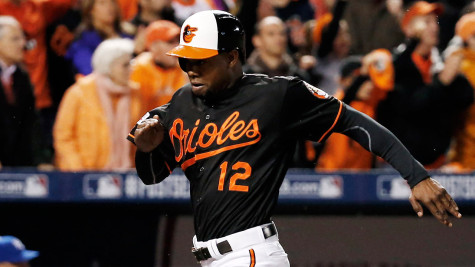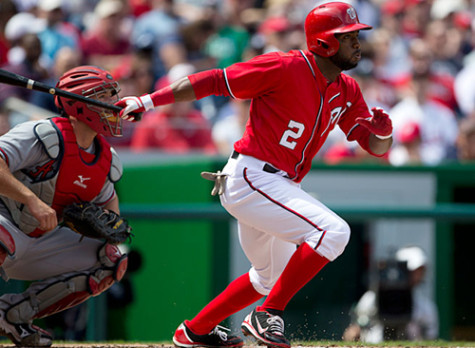
As we go deeper into the offseason, there still remains several star outfielders. Whether a team wants a leadoff man, power hitter, or 5-tool player – they are available. But on December 22nd, the Mets seemingly dropped out of the saturated market when they agreed to terms with new fan favorite, Alejandro De Aza.
The signing of De Aza is reminiscent of when the Mets acquired Chris Young. They threw seven million dollars on a player with limited talent, when there were many better options available. However, this signing might be worse. Why? It is simple – this team is not a basement dwelling team anymore where this would be acceptable – we’re the defending National League champions coming off a World Series appearance.
Why did they decide to bail when Denard Span. Dexter Fowler, Yoenis Cespedes, Justin Upton, Alex Gordon, and Gerardo Parra were all still available and according to reports, their prices are all creeping down because of the glut? Not to mention trade options like Charlie Blackmon and Carlos Gonzalez are also available on the trade market. Why would the team object to the notion of signing any of these guys? Any one of the players that I mentioned above would make the Mets significantly better.
Now, I understand why the Mets may not be interested in signing Gordon or Upton. Each player was extended a qualifying offer, meaning the team would have to surrender a first round pick, and additionally they would not fit well defensively in center field. But the fact that they are available helps lower the price of guys like Fowler, Cespedes, Span, and Parra – at least if you subscribe to the Law of Supply and Demand. Too many options and too few teams interested, should have been a perfect environment for the Mets.

According to Bob Nightengale of USA Today, the White Sox want to sign free agent outfielders, Alex Gordon or Yoenis Cespedes, but at no more than three years. The Mets beat writers had also reported that the Mets would also be willing to sign Cespedes at no more than three years. But after they signed De Aza, the Mets went into shutdown mode and the those same reporters all said the Mets had moved on from Cespedes and Span altogether. In fact they cancelled plans to attend his showcase this week. Word now is that he’ll only get a one-year pillow contract and re-test free agency next offseason after he wows the league in 2016.
As mentioned previously, baseball insiders and team beat reporters have all confirmed that the Mets are out of the free agent outfield market. But, how could they not be interested in any of these players if the prices continue to fall? If Cespedes ends up signing for 3-4 years at roughly $13-16 million dollars annually, would they still be happy that they had moved on from him? Or how about if Span or Parra sign for one or two years, would they still be confident in what they have, or would they be dealing with some regret?
Bottom line, the Mets should not opted out of this significant and still undefined market. I would have liked to see the Mets’ front office do their due diligence and remain in contact with each player’s agent. In my opinion, the Mets can ill-afford to deplete their farm system any further at the trade deadline as they did last year. It took years for them to build it up, it would be discouraging to see them tear it down this quickly. The Mets used to be known as the team that liked to wait for the market to develop before acting. That philosophy might have served them well this offseason, especially in assessing the outfield market.
Anyway, I thought this was a good topic of discussion. How did the Mets go from having significant interest in Span and Parra to doing an about-face a few days later and picking up a journeyman outfielder like De Aza? What were the motivating factors? Should they have waited out the market to see if they could get one of the more ideal and productive options at a better than expected price?















